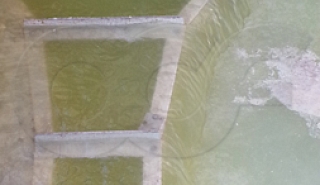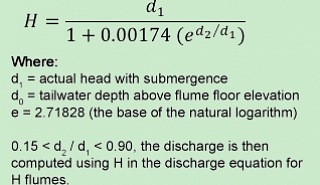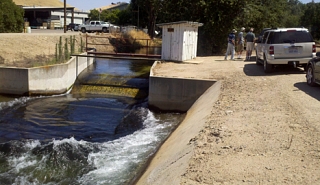When investigating a flume’s operation, one thing to look for is the presence of submergence. Certain visual clues can help an operator to make informed assumptions regarding a flume’s performance.
This is not to say that you should rely only on visual observations of the water’s surface. Instead, where submergence is suspected, careful measurement of the flow depth at the primary and secondary points of measurement are requried.

Remember that submergence doesn’t only occur at higher flows, it can just as easily occur at low to average flow rates – submergence is a function of downstream hydraulics!
Understanding Submergence
All flumes have a minimum needed head loss to assure that free flow exists and that only an upstream head measurement is needed to determine discharge rate. When the flow conditions are such that the downstream channel retards flow through the flume by more than 1%, a flume is defined as being submerged.
As the downstream channel retards flow, the depth in the channel increases. At the ratio of downstream to upstream head, Hb / Ha, is the submergence transition, st. The closer this ratio is to one, the more submerged the flume becomes (and the more retarded discharge is from the flume).
When the submergence transition occurs, the only way to get accurate flow rates with a flume is to measure level at both the primary, Ha, and secondary, Hb, points of measurement and applying the relevant submerged flow equation
Submerged flow equations have been developed for the Cuthroat, Parshall, and H Type flumes. They have not been developed for Palmer-Bowlus, Trapezoidal, or RBC flumes
Submergence also increases the upstream channel depth, which in turn decreases the upstream velocity. The reduction in upstream velocity may result in or aggravate sedimentation problems.
Visual Determination of Submergence
Visual determination of submergence transition (that specific condition when a flume has just changed from free flow discharge to submerged flow discharge) can be difficult for most flumes.
However, for conditions where the flume is past the submergence transition, there are visual clues that can aid in the determination.

In general, if the downstream hydraulic jump creates a frothy wave at or beyond the constriction of the throat section, then the flume is operating under free-flow conditions.

If the wave is in the throat itself, no longer frothy (only a gradual depression in the water level), or no wave is visible, then the flume is submerged.






